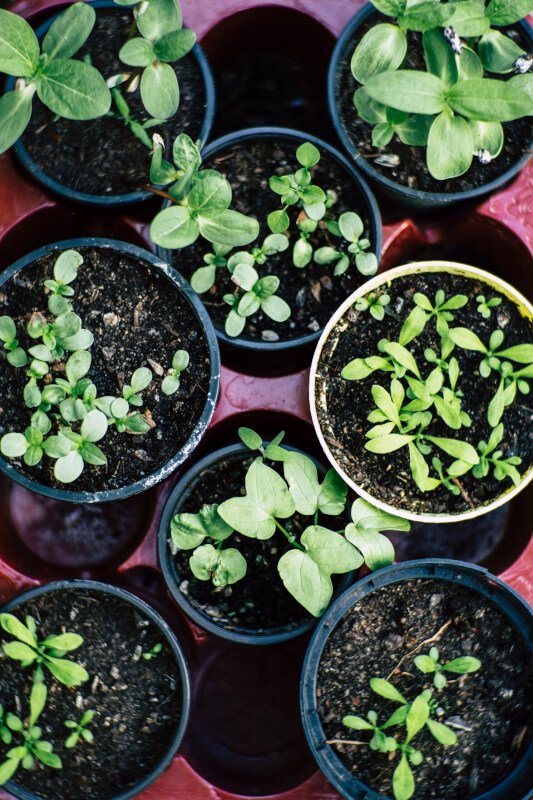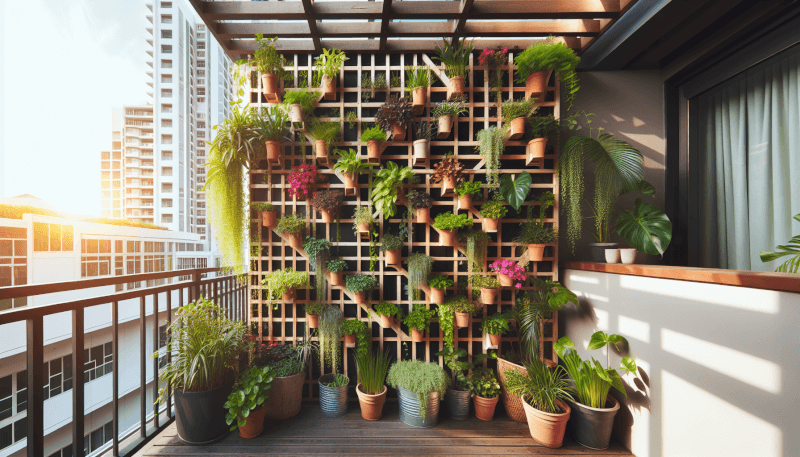Imagine transforming a plain wall into a lush and vibrant oasis filled with beautiful greenery. With our simple step-by-step guide, you can learn how to build your very own DIY vertical garden wall. Whether you have limited space or simply want to add a unique touch to your home, this project is perfect for bringing nature indoors. From selecting the right plants to arranging them in an eye-catching design, we will walk you through the process of creating a stunning vertical garden that will not only enhance the aesthetic appeal of your space but also provide numerous benefits for your well-being. Get ready to unleash your inner gardener and let nature breathe life into your home.

Choosing the Right Location
Choosing the right location for your vertical garden is essential to ensure its success. When assessing sunlight exposure, consider how much direct sunlight the area receives throughout the day. Most plants require a minimum of five to six hours of sunlight to thrive, so it’s important to choose a location that receives adequate sunshine. Additionally, assess the availability of space in the chosen area. Make sure there is enough room for your vertical garden to grow vertically without obstructing walkways or other structures.
Designing Your Vertical Garden
Designing your vertical garden involves selecting a style, determining the size and shape, and choosing the right plants. When selecting a style, consider your personal preferences and the overall aesthetic you want to achieve. Vertical gardens can range from more traditional designs with vibrant flowers and greenery to modern and minimalist styles with clean lines and succulents.
Next, determine the size and shape of your vertical garden. Consider the available space, the number of plants you want to include, and any structural limitations in the area. You can choose a narrow and tall design or a wider and shorter one, depending on your preferences and space constraints.
Choosing the right plants is crucial for a successful vertical garden. Consider the amount of sunlight the location receives, the environmental conditions (such as wind and humidity), and whether the plants are suitable for vertical growing. Select plants that have similar water and light requirements to make maintenance easier.
Gathering the Materials and Tools
Before building your vertical garden wall, gather all the necessary materials and tools. Start by obtaining a suitable frame, which can be made of wood, metal, or other sturdy materials. You will also need pots or containers to hold the plants, so choose ones that are lightweight, have good drainage, and are suitable for vertical mounting.
Acquire the necessary plants for your vertical garden, considering their compatibility with the chosen location and their ability to grow vertically. You may also need to gather some tools, such as a drill, screws, measuring tape, and a saw, to assist with the construction process.
Preparing the Frame
To prepare the frame for your vertical garden wall, begin by measuring and cutting the frame materials according to the desired size and shape. Take accurate measurements to ensure a precise fit and use a saw to cut the materials to the correct dimensions. Once you have all the pieces cut, join the frame together using screws or other suitable connectors. Make sure the frame is sturdy and able to support the weight of the pots and plants.

Securing the Frame to the Wall
Securing the frame to the wall is crucial to ensure the stability and safety of your vertical garden. Start by finding the best wall support, such as a sturdy wall stud or anchor. Use a stud finder or consult a professional if needed. Determine the right height and positioning for the frame, considering factors such as accessibility and aesthetics. Once you have determined the ideal location, attach the frame securely to the wall using appropriate screws or wall anchors.
Attaching the Pots or Containers
Choosing the right mounting system for your pots or containers is essential to keep them secure in your vertical garden. There are various options available, including hooks, brackets, or specially designed vertical garden systems. When positioning the pots or containers on the frame, consider the spacing between each one to allow for proper growth and airflow. Secure the pots or containers in place using the chosen mounting system, ensuring they are stable and able to hold the weight of the plants.

Installing an Irrigation System
Installing an irrigation system is crucial to ensure your vertical garden receives adequate water. Select the appropriate irrigation method based on the specific needs of your plants, such as drip irrigation or a vertical garden irrigation system. Install the system according to the manufacturer’s instructions and make sure it is tailored to meet the watering requirements of your plants.
Planting Your Vertical Garden
Preparing the plants before planting is important for their successful growth in your vertical garden. Ensure that they are healthy, free from pests or diseases, and have a sufficient root system. Arrange the plants in the containers, considering their height and growth habit to create a visually appealing display. Once planted, water the plants thoroughly to help them establish their root systems.

Maintaining Your Vertical Garden
To maintain your vertical garden, regular care and attention are required. Prune and trim the plants as needed to promote healthy growth and maintain the desired shape. Monitor for pests and diseases, promptly addressing any issues to prevent damage to your vertical garden. Fertilize the plants regularly with a suitable plant food to provide them with essential nutrients. Lastly, remember to water your garden regularly, ensuring the soil remains moist but not waterlogged.
Enjoying Your Vertical Garden
Once your vertical garden is thriving, take the time to arrange furniture and decorations around it to create a cozy and inviting atmosphere. Consider adding seating areas or decorative elements that complement the style of your vertical garden. Enjoy the beauty and tranquility of your newly created outdoor oasis, and take pride in the hard work and creativity you put into building your DIY vertical garden wall.



